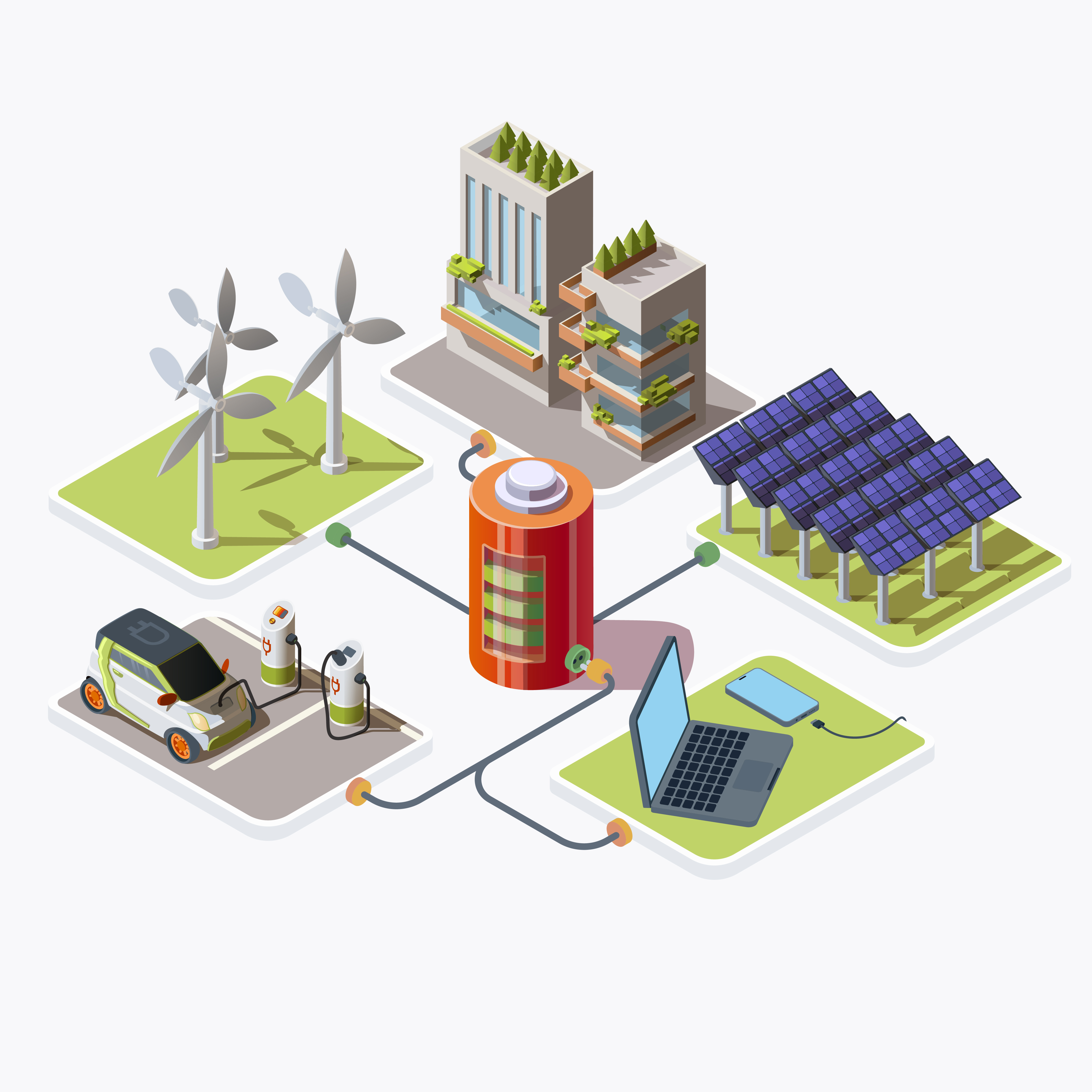Table of Contents
ToggleIntroduction
The United Nations’ Sustainable Development Goals (SDGs) provide a comprehensive framework for addressing global challenges and achieving sustainable development by 2030. The SDGs encompass a wide range of interconnected issues, including poverty alleviation, environmental protection, and social justice. Renewable energy has emerged as a pivotal player in the pursuit of global sustainability goals. From mitigating climate change to promoting social equity and economic prosperity, renewable energy plays a multifaceted role in shaping a sustainable future for humanity and the planet. In this article, we delve into the various dimensions of renewable energy’s contribution to achieving global sustainability goals.
Achieving global sustainability targets is imperative for ensuring a prosperous and equitable future for all. By addressing pressing issues such as climate change, biodiversity loss, and social inequality, we can create a more resilient and sustainable world for current and future generations.
Renewable Energy’s Contribution to Sustainable Development
Renewable energy projects have the potential to promote social equity by providing access to clean and affordable energy for underserved communities. By decentralizing energy production and empowering local stakeholders, renewable energy initiatives can contribute to poverty reduction and enhance social inclusion. The transition to renewable energy offers significant economic benefits, including job creation, investment opportunities, and cost savings. Renewable energy industries have become major drivers of economic growth, providing employment in manufacturing, construction, installation, and maintenance sectors.
Renewable energy plays a crucial role in mitigating climate change by reducing greenhouse gas emissions and transitioning away from fossil fuels. Solar, wind, hydroelectric, and other renewable energy sources offer clean alternatives to coal, oil, and natural gas, thereby helping to limit global temperature rise. Many countries have set ambitious renewable energy targets as part of their national climate plans. These targets aim to increase the share of renewable energy in the energy mix, reduce dependency on fossil fuels, and accelerate the transition to a low-carbon economy.
Sustainable Energy Access and Renewable Solutions
Off-grid renewable energy systems, such as solar home systems and mini-grids, have the potential to provide electricity to remote and underserved areas without access to centralized grid infrastructure. These systems offer reliable and clean energy solutions for powering homes, schools, healthcare facilities, and businesses in off-grid communities. Renewable energy plays a crucial role in addressing energy poverty by providing reliable and affordable electricity to underserved populations. Off-grid solar solutions, in particular, have emerged as a cost-effective way to improve energy access and quality of life for millions of people living in energy poverty.
Renewable energy technologies produce minimal air pollution compared to fossil fuels, which emit harmful pollutants such as particulate matter, sulfur dioxide, and nitrogen oxides. By replacing fossil fuel-based power generation with clean renewable energy sources, we can improve air quality and protect public health. The transition to renewable energy offers significant health benefits by reducing exposure to air pollutants and associated health risks. Cleaner air can lead to lower rates of respiratory diseases, cardiovascular problems, and premature deaths, resulting in improved public health outcomes and healthcare savings.
Renewable Energy and Water Conservation
Conventional energy generation, such as coal-fired power plants and nuclear reactors, requires large amounts of water for cooling and steam generation. In contrast, renewable energy technologies, such as solar photovoltaic panels and wind turbines, have minimal water requirements, making them more water-efficient and environmentally sustainable alternatives. Renewable energy can help mitigate water scarcity by reducing the water intensity of electricity generation and minimizing competition for water resources. By shifting towards renewable energy sources, we can alleviate pressure on water supplies and enhance water security in regions vulnerable to droughts and water stress.
Renewable energy projects, such as wind farms, solar parks, and hydropower plants, can have both positive and negative impacts on biodiversity. While these projects can help reduce greenhouse gas emissions and mitigate climate change, they may also pose risks to wildlife habitats, migration routes, and ecosystems if not properly planned and managed. To minimize negative impacts on biodiversity, it is essential to follow best practices for sustainable renewable energy development. This includes conducting thorough environmental assessments, engaging stakeholders, avoiding sensitive areas, and implementing mitigation measures to protect wildlife and ecosystems.
Corporate Sustainability and Renewable Energy Adoption
Businesses are increasingly recognizing the benefits of renewable energy procurement as part of their sustainability strategies. Power purchase agreements (PPAs), onsite solar installations, renewable energy certificates (RECs), and green tariffs are common approaches for businesses to source renewable energy and reduce their carbon footprint. Many companies are setting ambitious renewable energy targets and commitments to transition to 100% renewable electricity or achieve net-zero emissions. By aligning renewable energy goals with corporate sustainability objectives, businesses can demonstrate environmental leadership, enhance brand reputation, and drive market demand for clean energy solutions.
Financial institutions play a critical role in funding renewable energy projects by providing loans, grants, and investment capital to developers, utilities, and project sponsors. Banks, development finance institutions (DFIs), private equity firms, and impact investors are increasingly allocating capital to renewable energy ventures to support clean energy transition and climate mitigation efforts. Green bonds and other sustainable finance instruments enable investors to channel capital towards renewable energy and climate-friendly projects. These financial mechanisms provide funding for renewable energy infrastructure, energy efficiency improvements, and climate resilience initiatives while offering attractive returns and environmental benefits to investors.
Policy Frameworks for Renewable Energy Deployment
Policy frameworks, such as feed-in tariffs, tax incentives, renewable portfolio standards (RPS), and net metering programs, play a crucial role in driving renewable energy deployment and investment. These policy instruments create market incentives, reduce financial barriers, and level the playing field for renewable energy technologies to compete with fossil fuels. Regulatory reforms are essential for creating an enabling environment for renewable energy development and removing barriers to market entry. Streamlining permitting processes, improving grid integration, establishing clear licensing procedures, and providing long-term policy certainty are key regulatory interventions to accelerate renewable energy growth and attract investment.
International cooperation and partnerships are essential for sharing knowledge, resources, and best practices in renewable energy development. Multilateral organizations, bilateral aid agencies, and international NGOs collaborate with governments, industry stakeholders, and civil society to support capacity building, technology transfer, and policy dialogue on renewable energy. Technology transfer and knowledge sharing initiatives facilitate the dissemination of renewable energy technologies and expertise to developing countries and emerging markets. Capacity building programs, technical assistance projects, and South-South cooperation initiatives help bridge the technology gap and promote sustainable energy access and development worldwide.
Renewable Energy and Disaster Resilience
Renewable energy technologies, such as solar photovoltaics, wind turbines, and microgrids, can enhance disaster resilience by providing reliable and decentralized energy solutions during emergencies. Off-grid renewable systems are less vulnerable to disruptions caused by natural disasters, such as hurricanes, floods, and wildfires, compared to centralized power grids. After disasters strike, rapid deployment of renewable energy solutions can help restore essential services, support emergency response efforts, and facilitate community recovery. Solar-powered generators, portable solar kits, and wind-powered water pumps are examples of renewable energy technologies deployed in disaster-affected areas to provide critical electricity and water services.
Indigenous communities have a unique relationship with renewable energy resources and traditional knowledge systems that can inform sustainable energy development practices. Engaging indigenous peoples in renewable energy projects fosters collaboration, respect for cultural values, and equitable sharing of benefits while ensuring environmental stewardship and social inclusion. Respecting indigenous rights, cultural heritage, and land tenure rights is essential when planning and implementing renewable energy projects on indigenous lands. Collaborative decision-making processes, free, prior, and informed consent (FPIC), and benefit-sharing agreements are key mechanisms for promoting culturally appropriate and socially responsible renewable energy development in indigenous territories.
Human-Centric Design in Renewable Energy Systems
Incorporating accessibility features into renewable energy systems ensures that they are inclusive and accessible to people of all abilities. This includes designing solar panel installations, wind turbines, and energy storage facilities with ramps, handrails, tactile indicators, and other accommodations to facilitate access and participation by individuals with disabilities. User-friendly interfaces and intuitive controls enhance the usability and user experience of renewable energy systems, making them accessible and engaging for end-users. Interactive dashboards, mobile apps, and online platforms enable consumers to monitor their energy usage, manage their renewable energy systems, and make informed decisions about their energy consumption habits.
Conclusion
Renewable energy has emerged as a cornerstone of global sustainability efforts, offering solutions to some of the most pressing challenges facing humanity and the planet. By harnessing the power of renewable resources and embracing sustainable energy practices, we can build a more resilient, equitable, and prosperous future for all. From addressing climate change and promoting social equity to fostering economic development and protecting the environment, renewable energy holds the key to achieving a sustainable and thriving world for generations to come. You might be interested in the concept of sustainable energy, which plays a significant role in global sustainability goals. Sustainable energy encompasses renewable energy sources and technologies that contribute to reducing carbon emissions and promoting environmental sustainability. Additionally, sustainable development is another crucial aspect related to achieving global sustainability goals. It focuses on balancing economic growth, social well-being, and environmental protection to ensure a sustainable future for all.
FAQs
What are global sustainability goals, and why are they important?
An overview of global sustainability goals, such as the United Nations’ Sustainable Development Goals (SDGs), and explains their significance in addressing pressing environmental, social, and economic challenges worldwide.
How does renewable energy contribute to global sustainability goals?
The role of renewable energy in advancing sustainability objectives, including mitigating climate change, promoting clean energy access, fostering economic development, and protecting ecosystems and biodiversity.
What are some specific examples of renewable energy projects supporting sustainability goals?
Real-world examples of renewable energy initiatives that contribute to achieving specific sustainability targets, such as solar-powered off-grid electrification projects in rural communities, wind farms reducing carbon emissions, and green building initiatives integrating renewable energy technologies.
What challenges and opportunities exist in integrating renewable energy into sustainability strategies?
The challenges, such as intermittency, grid integration, and policy barriers, that may hinder the widespread adoption of renewable energy. It also explores opportunities for overcoming these challenges through technological innovation, policy reforms, and stakeholder collaboration.
How can individuals, businesses, and governments support the role of renewable energy in achieving global sustainability goals?
Provides practical guidance on how different stakeholders can contribute to advancing renewable energy and sustainability objectives. It includes actions such as investing in renewable energy projects, advocating for supportive policies, adopting energy-efficient practices, and promoting renewable energy education and awareness.







